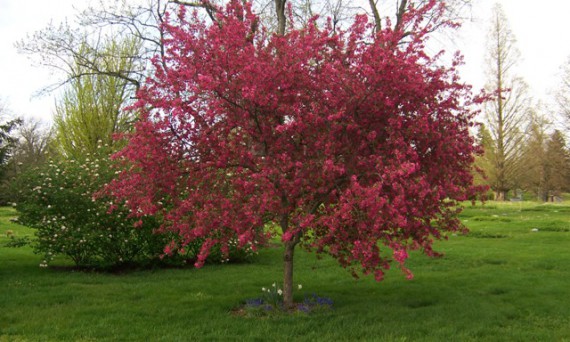My first inclination is to say that this tree is suffering from Apple Scab, a very common fungal affliction for ornamental trees in northern Illinois. However, your tree, Prairie fire, is a variety of the Malus species and is resistant to the scab fungus. Resistant does not mean that the tree could not have the fungus and over the years conditions may have been optimum for the persistence of the condition.
Apple scab is hardy during the spring and early summer when humidity is high and temperatures are moderate. Spores that have overwintered on the ground in diseased leaves and twigs cause infections in the spring about the time your leaves expand on the tree. The peak of infection due to spore dispersal often happens at the end of blooming and secondary spores are produced to help re-infect leaves throughout the summer months.
There are steps you can take to control the scab fungi. Your tree needs three fungicide treatments 10-14 days apart. The first spray should take place when the buds on your tree begin to swell. You can also help by removing the infected debris wintering under your tree at the first opportunity in the spring, thus reducing the source of the spores.
There is another possibility; your tree was improperly planted, or is in soil that is not conducive to permitting your tree to thrive. In that case, you could be helped by fertilizing the tree and providing the proper mulch.
We could visit your site and give you a more definitive assessment. Spraying and fertilizing are inexpensive and the simple steps you could take to prevent conditions that would host the fungi by cleaning up in the fall after leaf fall and in the spring would complement our spraying and feeding.
